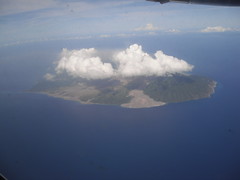Pinkston Watersports Centre is an awesome new facility at the canal basin in the centre of Glasgow. After many years of hard campaigning and fundraising by canoeists around the country Scotland will finally have an artificial whitewater course to canoe on. England and Wales have had these for years but the difference is this one is intended for canoeists and canoe clubs. All the other courses make money by sending down bored office workers on rafts a dozen at a time which is far more profitable. This centre is a charity that runs it for canoe clubs like mine. Lovely. Consequently any club can get people trained up as External Site Operators who will get a key to the place and can run sessions on the flat or moving water. I did that training last night, here’s a few notes to help my memory..
19 May is the grand opening for funders and politicians. Sat 31 May is the grand opening for clubs, I should organise a trip.
Iain is the centre manager and Allan with the funky hair is watersports manager.
Currently bookings are made by phone and e-mail and pumps are turned on manually by staff. Shortly they will have a website booking system. This will come with a centre internal website which controls the whitewater course pumps.
Any club can get people trained as External Site Operator, it’s a simple 3 hour course. Over 18s only. The ESO will have responsibility for the use of the centre by their group. Groups must have liability insurance, SCA affiliated clubs have this for official trips. People overseeing the group must have Foundation Safety and Rescue training for use on flat and Whitewater Safety and Rescue Training for use on the whitewater course. Beyond that it’s up to the club to decide if they need to follow BCU Terms of Reference.
Park and Play sessions, those overseen by centre staff and not an ESO, are for 18+ only as they don’t currently have an AALA licence.
The course is nominally grade 2(3) and the short course is just a big wave.
There are three pumps to choose how much fun you want to have, 1 is mostly for rescue training, 2 is for fun, 3 is for real fun.
No throw lines or slings allowed, if they get dropped they’ll end up back in the pumps which will break.
Any injuries of other incidents should be reported to the BCU and to Pinkston staff. This is to spot problem areas and incase there is legal action years down the line.
You need to bring your own first aid kit.
Importantly, you need to bring your own 19mm spanner to be able to move the door that switches between the short and the long course, and the door which opens onto the car park.
Costs are £30 an hour on the flat and £75 an hour on the moving. Didn’t ask about the Park and Play sessions but the website suggests £7.50 a person, not sure what times these will run. This includes changing rooms.
Clubs can also hire a container.
It’ll be great fun, see you on May 31st 🙂


 We Promise
We Promise











